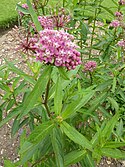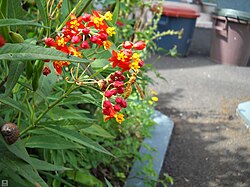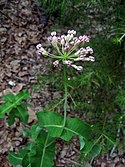Entomology - with special reference to its biological and economic aspects (1906) (14781610264)
Identifier: entomologywit00fols (find matches)
Title: Entomology : with special reference to its biological and economic aspects
Year: 1906 (1900s)
Authors: Folsom, Justus Watson, 1871-1936
Subjects: Entomology
Publisher: Philadelphia : P. Blakiston's Son
Contributing Library: Robarts - University of Toronto
Digitizing Sponsor: University of Toronto
View Book Page: Book Viewer
About This Book: Catalog Entry
View All Images: All Images From Book
Click here to view book online to see this illustration in context in a browseable online version of this book.
Text Appearing Before Image:
hids.—The orchids, with their fantastic forms, are reallyelaborate traps to insure cross pollination. In some orchids(Hahenaria and others) the nectar, lying at the bottom of along tube, is accessible only to the long-tongued Sphingid^.\\hile probing for the nectar, a sphinx moth brings each eyeagainst a sticky disk to which a pollen mass is attached, andflies away carrying the mass on its eye. Then these polliniabend down on their stalks in such a way that when the moththrusts its head into the next flower they are in the properposition to encounter and adhere to the stigma. The orchidAngrdciun sesquipcdalc, of Madagascar, has a nectary tubemore than eleven inches long, from which Darwin inferred theexistence of a sphinx moth with a tongue equally long.—aninference which proved to be correct. Milkweed.—The various milkweeds are fascinating subjectsto the student of the interrelations of flowers and insects. Theflowers, like those of orchids, are remarkablv formed with Fig. 254.
Text Appearing After Image:
Structure of milkweed flower (Asclcl^ias inciirnata) with reference to cross pollina-tion. A, a single flower; c, corolla; h, hood; B, external aspect of fissure if) leadingup to disk and also into stigmatic chamber; h, hood; C, pollinia; d, disk. Enlarged. INSECTS IN RELATION TO PLANTS 263 reference to cross pollination by insects. As a honey bee orother insect crawls over the flowers (Fig. 254, A) to get thenectar, its legs slip in between the peculiar nectariferous iwodssituated in front of each anther. As a leg is drawn upward oneof its claws, hairs, or spines frec(uently catches in a V-shapedfissure (f, Fig. 254, B) and is guided along a slit to a notcheddisk, or corpuscle (Fig. 254, C, d). This disk clings to theleg of the insect, which carries off by means of the disk a pairof pollen masses of pollinia (Fig\ 254, C). When first re-moved from their enclosing pockets, or anthers, these thinspatulate pollinia lie each pair in the same plane, but in a fewminutes the two pollinia tw
Note About Images
Relevantní obrázky
Relevantní články
KlejichaKlejicha (Asclepias) je rod rostlin z čeledi toješťovité. Jsou to převážně vytrvalé byliny s jednoduchými listy a často nápadnými květy v bohatých okoličnatých květenstvích. Květy mají specializovaný způsob opylování. Rod zahrnuje asi 200 druhů, pocházejících vesměs z Ameriky. Nejvíce druhů roste v mírných a subtropických oblastech Severní Ameriky. V teplých oblastech České republiky roste zdomácnělá klejicha hedvábná. Klejichy obsahují jedovaté glykosidy. Mají význam v lékařství a fytoterapii, poskytují vlákna a v malé míře i technický olej. Některé druhy jsou pěstovány jako okrasné rostliny. .. pokračovat ve čtení


















